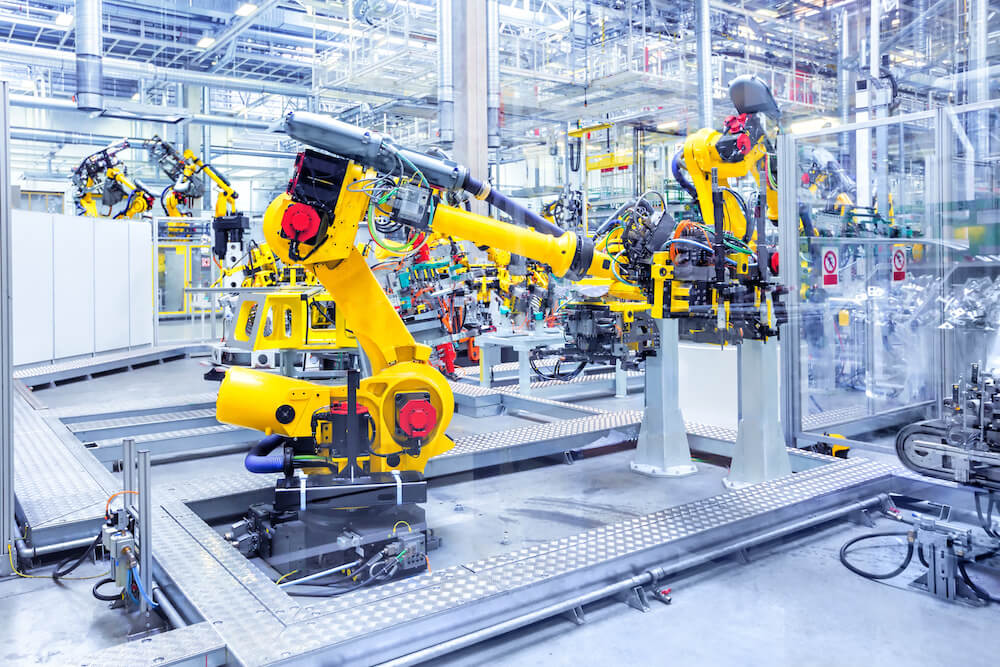Malaysian Vision Valley
At the top on the agenda will be the 150,000-hectare, RM290 billion Malaysian Vision Valley (MVV) integrated development blueprint covering Seremban, Nilai and Port Dickson, home to more than 70% of Negeri Sembilan’s population. The masterplan revolves around National Key Economic Areas (NKEA) outlined in the National Transformation Programme. MVV is expected to create 1.38 million jobs through the development of a high tech park, industrial campus, integrated transport district, sports and recreational city, world knowledge city, biopolis, wellness city and tourism district. Transport Equipment, Food Manufacturing, Electronics & Electrical Products, and Scientific & Measuring Equipment are among the important employment sectors for MVV.
MVV is set to benefit from the economic success of Greater Kuala Lumpur/ Klang Valley (Greater KL/ KV), one of the 12 National Key Economic Areas (NKEA), given its logistic connectivity. The integrated high-speed rail transportation hub in Labu will connect MVV to KLIA, Bandar Malaysia and Singapore. The Nilai-Labu-Enstek Expressway and Senawang-KLIA Expressway are already under construction.
Greater KL/ KV alone is expected to contribute over 300,000 jobs and RM190 billion in Gross National Income (GNI) by 2020. Another key focus of NKEA is the palm oil and rubber industry, which is expected to create some 41,600 jobs and RM230.9 billion in GNI by 2020.
Moving towards high-tech industries

Across the nation, high-tech industries spurred by foreign direct investment are expected to contribute a number of high-value and high-skilled jobs. The Malaysian Investment Development Authority (MIDA) approved a total of RM54.736 billion worth of foreign investment in manufacturing and services sectors last year. Approved domestic investment was valued at RM142.430 billion. Together, they are expected to contribute about 140,000 jobs in manufacturing and 5,500 jobs in services sector.
Statistics released by Department of Statistics Malaysia show that  manufacturing sector created over 1 million jobs last year. Petroleum, chemical, rubber & plastic; electrical & electronics products; textile, wearing apparel, leather & footwear were among the top contributors.
manufacturing sector created over 1 million jobs last year. Petroleum, chemical, rubber & plastic; electrical & electronics products; textile, wearing apparel, leather & footwear were among the top contributors.
The electrical and electronics (E&E) industry is expected to create 522,000 skilled and semi-skilled jobs by 2020 and agriculture industry could possibly generate 74,600 jobs by 2020.
The Oil, Gas and Energy sector, another major economic contributor,  is expected to generate some 52,300 jobs and RM131.4 billion in Gross National Income (GNI) by 2020. The focus will be on four key thrusts: sustaining oil and gas production, enhancing downstream growth, making Malaysia the number one Asian hub for oil field services and building a sustainable energy platform for growth.
is expected to generate some 52,300 jobs and RM131.4 billion in Gross National Income (GNI) by 2020. The focus will be on four key thrusts: sustaining oil and gas production, enhancing downstream growth, making Malaysia the number one Asian hub for oil field services and building a sustainable energy platform for growth.
Meanwhile, services sector made up 54.4% (approx. RM1.5 trillion) of our Gross Domestic Product (GDP) last year, contributing about 3.6 million jobs nationwide. Financial sector alone provided some 7,200 jobs. Riding on strong foundations laid by our government, new growth areas to take note of include education and training services, healthcare travel, eco-tourism, green technology, integrated Islamic finance, creative industry, telecommunication and mobile services, R&D and design activities, and waste management.

Financial services alone, another NKEA focus, is expected to offer 275,400 jobs and RM180.2 billion in GNI by 2020. Healthcare industry is another key driver, contributing 181,000 jobs by 2020. Tourism and education industries might create 37,900 and 2,143 jobs by 2020.
Nurturing fresh graduates
According to Prime Minister Datuk Seri Najib Razak, Malaysia produces about 300,000 graduates each year through public and private higher learning institutions including universities and polytechnics. He noted that since the implementation of the national transformation policies in 2010, more than 2.26 million new jobs have been added to our employment market and fresh graduates were among the beneficiaries.
The government has also set up a Job Matching Committee under the Skim Latihan 1Malaysia (SL1M) 2.0 programme to find the right match for graduates and their future employers through job fair engagement programmes, for instance. The initiative under the auspices of the Economic Planning Unit (EPU) of Prime Minister’s Department, is carried out in collaboration with government-linked agencies and private corporations.
According to SL1M secretariat head Norashikin Ismail, the programme has helped more than 120,000 young graduates secure jobs since its inception in 2011. The SL1M fraternity has so far attracted more than 300 local companies who themselves are empowered to select and train their choice candidates.
MyApprenticeship and Youth Guarantee
 The newly launched MyApprenticeship programme under the National Blue Ocean Strategy is another initiative by the government to open up more job opportunities for the youths, including fresh graduates, women and current workers. The apprenticeship programme involving both the public and private participation allows participants to acquire hands-on knowledge, skills and experience to increase their employability in the future.
The newly launched MyApprenticeship programme under the National Blue Ocean Strategy is another initiative by the government to open up more job opportunities for the youths, including fresh graduates, women and current workers. The apprenticeship programme involving both the public and private participation allows participants to acquire hands-on knowledge, skills and experience to increase their employability in the future.
The Youth Guarantee initiative is another platform for Malaysian youths to access to gain access to the job market. Specifically designed for young people below 30, it provides either a job or training opportunity within six months upon registration with the Youth Offer system.
“Job opportunity and training” is part of the eight-point guarantee promised by BN. The others being income and skill enhancement; economy empowerment for rural youths; start-up financing facilitation for young entrepreneurs; burden alleviation for young families; better quality of life; fair opportunity in all segments; and guiding the young people towards the realisation of the National Transformation 2050 (TN50).
According to BN Youth chairman Khairy Jamaluddin who launched the programme, the government will link the youths with national mega infrastructural projects for a start. Incentives will also be given to social entrepreneurs who help create jobs. Over five million students will be equipped with digital skills to prepare themselves for the fourth industrial revolution. And more significantly, Youth Guarantee aspires to help over a million youths secure jobs through technical and vocational education and training (TVET), for example.
TVET aims to produce skilled workers through training that develops practical skills provided by vocational schools, Industrial Training Institutes (ITI), Polytechnics, MARA Vocational Institutes, National Youth Development Corps (NYDC) and the Center for Instructor and Advanced Skill Training (CIAST), among others.
Integrated Industrial Training Programme
In an effort to increase the intake of multi-racial students in industrial placement, the government has set up the Integrated Industrial Training Programme (Program Latihan Industri Perpaduan PLIP), in the name of interracial unity and cooperation.

According to Director of Social and National Integration (JPNIN) of Prime Minister's Office (JPM), Suraya Wen, the participation will strengthen the ties between Bumiputera students and non-Bumiputera employers and co-workers through industrial training and job placement. The programme targets 5,000 students for a start.
Key participants from the industry are the Associated Chinese Chambers of Commerce and Industry of Malaysia (ACCCIM) and Malaysian Retail Chain Association (MRCA), which will be assisting students from partnering universities in industrial placement. Since the inception of PLIP 2014, eight universities have signed MoUs with ACCIM and MRCA for this programme. They are University of Malaya (UM), Universiti Teknologi MARA (UiTM), Universiti Utara Malaysia (UUM), Universiti Putra Malaysia (UPM), Universiti Kebangsaan Malaysia (UKM), International Islamic University Malaysia (IIUM), Universiti Kuala Lumpur (UniKL) and Universiti Malaysia Perlis (UniMAP).
Reducing foreign labour dependence and establishing new economic zones
Human Resources Minister Datuk Seri Dr Richard Riot announced in February that the government is implementing certain measures to reduce the dependence of foreign labour to 15% by year 2020 as outlined in the 11th Malaysia Plan. With a total of 15.3 million jobs by 2020 in anticipation, the number of foreign workers should not exceed 2.3 million. The move is in tandem with the target of producing 35,000 skilled workers by 2020, especially through TVET, while encouraging the locals to seize the increased job opportunities.
Other employment initiatives include producing highly skilled construction workers, providing accredited skill development training for the underprivileged youths, expanding the practice of flexible working hours in the public sector and offering incentives to companies that adapt the system, attracting more non-Bumiputeras to join the civil service, and establishing sustainable industry zones by identifying new investment locations and relocating existing industrial zones.
The 4,451-hectare Special Border Economic Zone (SBEZ) in Bukit Kayu Hitam, Kedah is a good example. The mega project, which consists of a land port, free trade zone and commercial centre, is expected to contribute between RM30 billion and RM40 billion to our GDP annually and a sizeable job market that follows.
“We have created 2.26 million jobs since 2013, which is very close to our target of creating three million jobs in five years,” BN chairman Datuk Seri Najib Razak proudly said, hinting that Malaysians may expect the arrival of another one million jobs.


